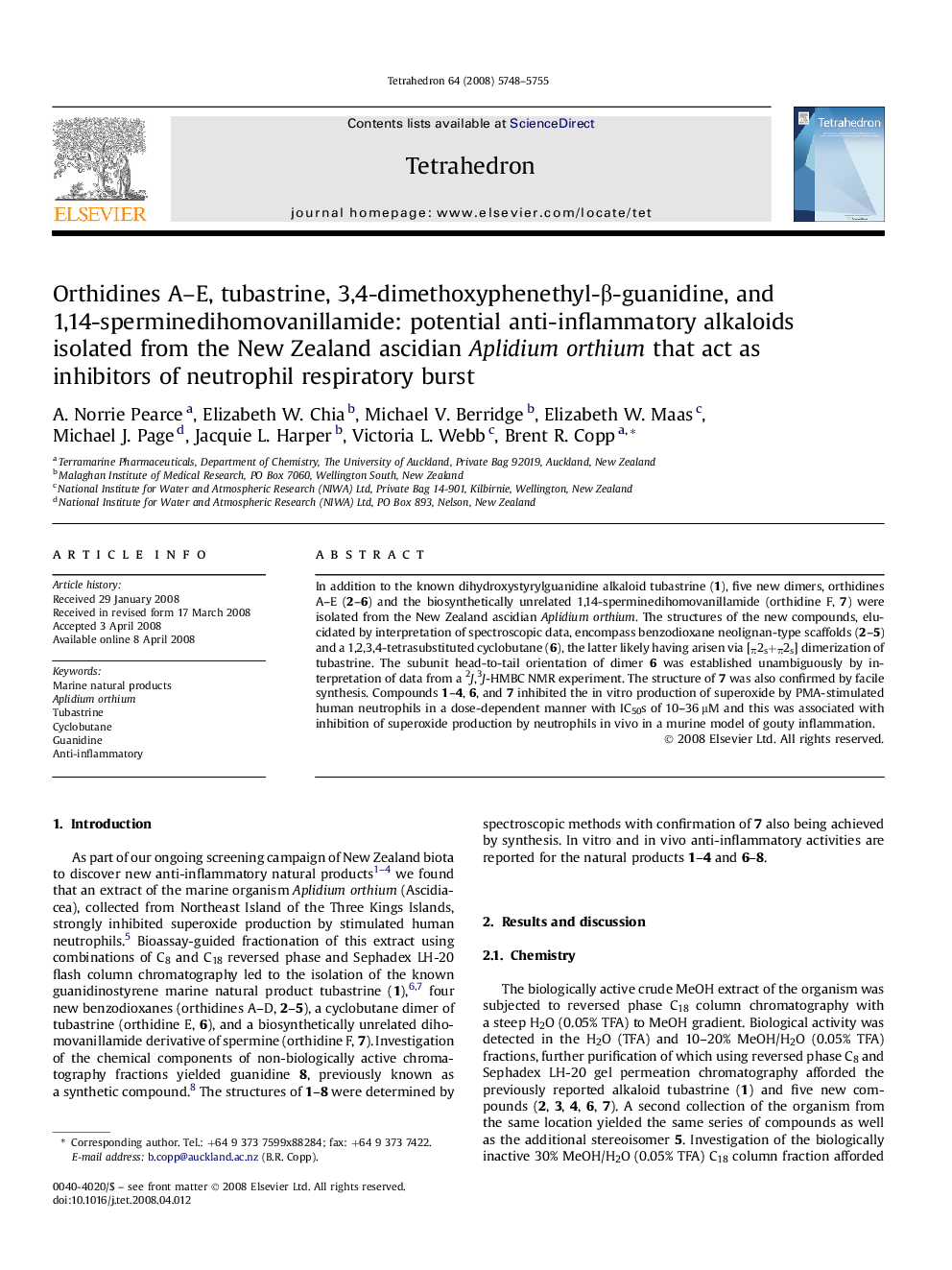| Article ID | Journal | Published Year | Pages | File Type |
|---|---|---|---|---|
| 5223929 | Tetrahedron | 2008 | 8 Pages |
In addition to the known dihydroxystyrylguanidine alkaloid tubastrine (1), five new dimers, orthidines A-E (2-6) and the biosynthetically unrelated 1,14-sperminedihomovanillamide (orthidine F, 7) were isolated from the New Zealand ascidian Aplidium orthium. The structures of the new compounds, elucidated by interpretation of spectroscopic data, encompass benzodioxane neolignan-type scaffolds (2-5) and a 1,2,3,4-tetrasubstituted cyclobutane (6), the latter likely having arisen via [Ï2s+Ï2s] dimerization of tubastrine. The subunit head-to-tail orientation of dimer 6 was established unambiguously by interpretation of data from a 2J,3J-HMBC NMR experiment. The structure of 7 was also confirmed by facile synthesis. Compounds 1-4, 6, and 7 inhibited the in vitro production of superoxide by PMA-stimulated human neutrophils in a dose-dependent manner with IC50s of 10-36 μM and this was associated with inhibition of superoxide production by neutrophils in vivo in a murine model of gouty inflammation.
Graphical abstractDownload full-size image
